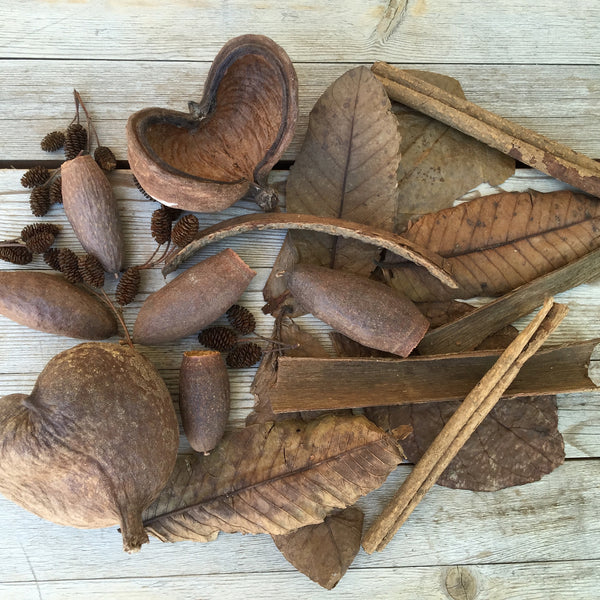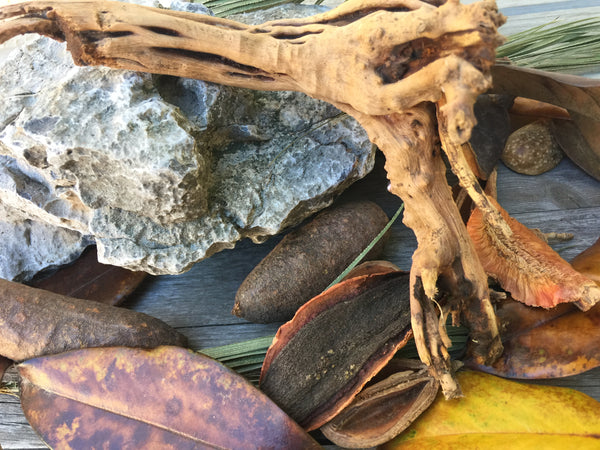- Continue Shopping
- Your Cart is Empty
"That which doesn't kill us..."
Okay, an ominous title, I suppose, but oddly fitting for today's blog, I think.
It's no secret that Tannin Aquatics offers all sorts of botanical items to add to your aquariums to help create more natural-looking blackwater aquariums. NEWS FLASH: We don't have the world market cornered on stuff you can add to tanks. And we didn't invent the concept. (Just in case you were wondering...).
Now, we have done a lot of "vetting" over the years (like, with hundreds of botanical items) to determine for ourselves what materials work in aquariums populated by fishes (hint- there are a LOT of items you can use). Oh sure, we've tried a few things over the years that killed fish...Experimenting with anything you put in your aquarium water can have all sorts of results...and some can be tragic. Some were from suppliers we had doubts about- others were stuff we collected ourselves from nature. Most of our tragedies from additions of personally collected botanicals were caused by these main things:
1) We added a ton of stuff at once to an aquarium that wasn't equipped to handle a large quantity of biological material. (either not biologically "mature", under-filtered, or in quantities which overwhelmed the biological filtration capacity.
2) We added items that apparently had some sap or other materials which seemed to have toxic affects on aquatic animals.
3) We added material that may have been collected in an area that had pesiticides or other manmade pollutants.
4) We threw something in our test tanks from sources which intended them for use for other purposes, and they had materials like varnish, colorants, or other nasty stuff on them. (i.e.; the "why-you-can't-just-try-anything-that-looks-cool" syndrome)
There are a lot of items you can experiment with; gather for your self, and experiment with in your aquariums. You just need to accept that some items won't work.
Some don't work for less fatal, more practical reasons:
-They simply fall apart in water and make a mess.
-They won't saturate and sink.
-They last a few days before breaking down completely.
-They give off "stuff" which makes the water cloudy or smelly.
-They go from "zero to stinky" and simply rot in days.
Now, in all fairness, even the stuff you get from us can have adverse affects on aquatic organisms. If you misjudge, misapply, overdo, etc., you can have bad outcomes, as we've discussed many, many time over the last couple of years, both here and in our "preparation" section.
Regardless of what you use and where you obtain it from, the fact is, when you add botanical material that was/is(?) alive into a closed aquatic environment, it will have some sort of impact. In our case, we are looking for a few possible positives from the stuff we add:
-It looks cool; representative of materials found in natural waters.
-It can be prepared to soften/sink/"clean up" a bit.
-It will impart some tannins to the water, creating a visible "tint."
-It can be utilized by fishes or other aquatic organisms for shelter, grazing surfaces, or substrate (i.e.; some degree of utility)
-Did I mention, it should look sort of like stuff found in natural waters? Oh, I did.

So look, it's not rocket science, but it does require time, effort, and common sense...not to mention, patience. Every item that we offer is something we've used in our own aquatic displays. We know the guys who are collecting them for us, and we understand that they're not known to be toxic, coming from polluted areas, or otherwise unsuitable for what we do.
And we constantly experiment with new stuff. That's all a part of being fish geeks/aquatic entrepreneurs. As one of my friends concluded recently, "You don't just sell botanicals- you sell time! You save people time by doing all of the vetting of sources and testing for them." Exactly.
If you want to collect some of your own materials and experiment- you should. Absolutely! But we do recommend using the "framework" of "practices" (i.e.; preparation, proceeding slowly, etc.) that we as a community have developed. Who knows? Perhaps one day you might become a "trusted supplier" for Tannin Aquatics!
Oh, and one more thing...
When we advise you to prepare stuff before using it in your tanks, it's not just to "cover our asses" (although that IS a good idea, lol) - It's because we've worked with the items we offer for a long time, and we have learned over the years that your far, far better off at being conservative, taking the time to prepare them (boiling or steeping or both) to not only remove "dirt" and maybe "crack off" some organics and an initial layer of cutting or lignin or whatever contained in the botanicals- but also to sort of create a "forced slow down" and make us all remember that you need to go slowly when adding these items to your aquarium. You'll need to judge their affect on the water chemistry and on your fishes. No need to rush.
Patience is super important here.
The other thing to remember, as we've talked about numerous times, is that organic materials added to an aquarium constitute "bioload", and will have some impact on your aquarium. Add too much too fast, and you could have a big CO2 issue as your beneficial bacteria struggle to keep up with all of the stuff. Add too much pH-affecting material (like catappa leaves) at one time, and you could drop the pH rather rapidly, which many fishes don't like (For example, Apistos).
And there are biofilms. Yes, we all know about these, and it's part of the game of playing with botanical materials in our tanks. We've talked about this ad nauseam...Botanical materials with texture surfaces always attract bacterials films. They are typically harmless, and actually are utilized by food by number of fishes and shrimp.
But to the neophyte "tinter", they look like...shit.
Yup.
There is no other nicer way to say it. We talk much about a "mental shift" that you have to make when you start a botanical-style, blackwater aquarium, and this is part of it. It should be no secret after two years of us talking about this stuff here that biofilms may form, the water will darken, and materials will decompose...exactly like in nature.

It's a natural process- one which has been going on in nature for eons, and is something we in our community have all have learned to not only accept- but find beautiful. Sure, some aquarists have a different definition of "beautiful", and you'll have to reconcile your newfound botanical interest with the type of aesthetic you like. You may want to remove stuff as it breaks down, scrub the larger pieces to remove biofilms, or run heavy doses of activated carbon to remove the "tint." It's all about what you like. However, it's also all about understanding what goes on when we add this stuff to our tanks.

And that's not any different from adding a plant, rock, piece of wood, fish, etc. to an aquarium. Everything has an impact. How we view the impact will affect how we feel about our aquariums. Simple as that. An obvious concept.
However, every once in a while it's nice to cart out this discussion to remind our ever-growing global community what the botanical-style blackwater aquarium is all about.

And guess what? You still might make mistakes, have some scary outcomes. Overdo something. You might lose a fish or two. It's simply reality. There are many, many variables in an aquarium that make trying new things potentially challenging. To "sugar coat" it and tell you that all you need to do is add "two of these and three of those" and you'll have an "instant Amazonian display" is not only unrealistic, it's completely irresponsible on our part. To say that you won't have to monitor, manage, and adjust as you go is foolish. And to assume that you won't have a setback or two along the way as you learn is kind of foolish.

And as they say, "...That which doesn't kill us truly makes us stronger..." Not always fun- but true many times, nonetheless.
You need to use common sense, apply some creativity, and embrace a sense of adventure. Your traveling along a path that, only a few years ago was considered incredibly "out there" and generally only taken by the most experimental of hobbyists. Now, thanks in a large part to you and your bold experimentation, efforts, and most important- sharing of experiences and ideas- we've develop what can truly be described as a "movement" of sorts within the hobby, with some fairly clearly-understood techniques, guidelines, and even "best practices" of sorts.

And it's still fun and exciting. And it always feels new! There is more to learn and share, each and every day. We're glad to have you on the journey!
So, if you see that interesting seed pod on your next hike, and think about how cool it might look in your tank....
Well, you know the drill here.
Stay bol;d. Stay creative. Stay careful. Stay patient.
And Stay Wet.
Scott Fellman
Tannin Aquatics
















Scott Fellman
Author